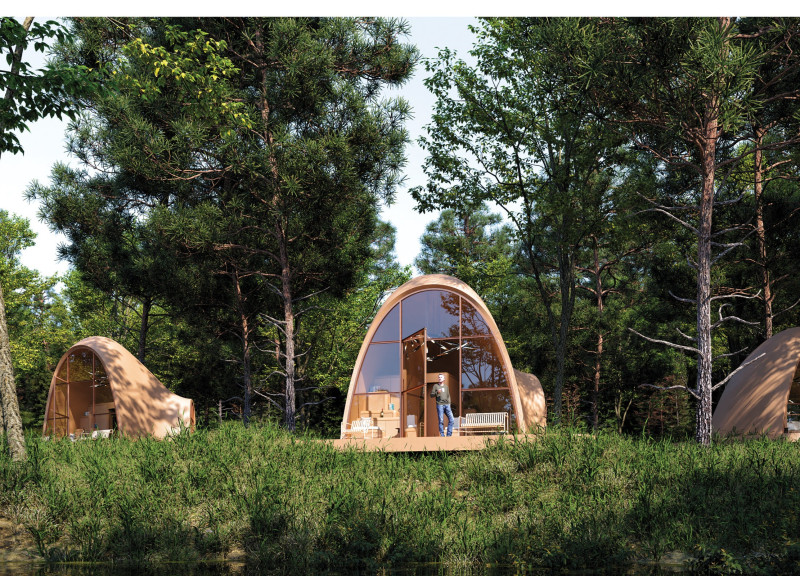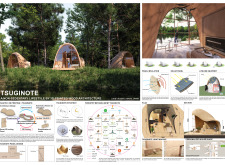5 key facts about this project
TSUGINOTE offers a fresh approach to living in a world where flexibility and sustainability are critical. Located by Lake Chuzenji in Nikko, Japan, the design focuses on creating spaces that support a mobile lifestyle. It uses modern technology and traditional ideas, aiming to meet the needs of its occupants while respecting the environment. The overall concept blends 3D printing with ecological practices, resulting in a building that encourages adaptation and personal connection to nature.
Modularity and Flexibility
A key feature of the design is its modular structure, which allows for easy assembly and disassembly. Residents can customize their living spaces according to their preferences. This user-friendly approach makes it accessible to those without construction experience. The modular printing system streamlines the building process, ensuring efficiency while allowing for personal expression in the layout of the home.
Structural Innovation
The use of 3D-printed joints represents a significant advancement in construction techniques. These joints simplify how panels connect, enhancing both speed and safety during building. Designed to be repositioned easily, these structural elements provide flexibility for changing needs and preferences. They enable occupants to rethink their living arrangements without extensive renovations.
Energy Efficiency
The design prioritizes energy conservation by incorporating insulation into the panel elements. These features enhance thermal performance, keeping the home comfortable year-round. Roof panels are equipped to generate solar power, reducing dependence on traditional energy sources. This focus on energy efficiency aligns with the principles of sustainability, ensuring the home complements its natural surroundings.
Material Considerations
Materials play an essential role in the project, highlighting a commitment to ecological practices. Wood powder and wood filament are the primary components, sourced from local forestry to minimize environmental impact. Liquid glass is used as a fire-resistant coating, contributing to the safety and durability of the home without compromising its overall look.
TSUGINOTE combines modern technology with timeless craftsmanship. The result is a living space that fosters a close relationship between inhabitants and the environment. By prioritizing sustainability and flexibility, the design serves as a practical model for future residential architecture. It reflects a growing desire for homes that adapt to the ever-changing needs of their occupants while maintaining a strong connection to the natural world.




















































